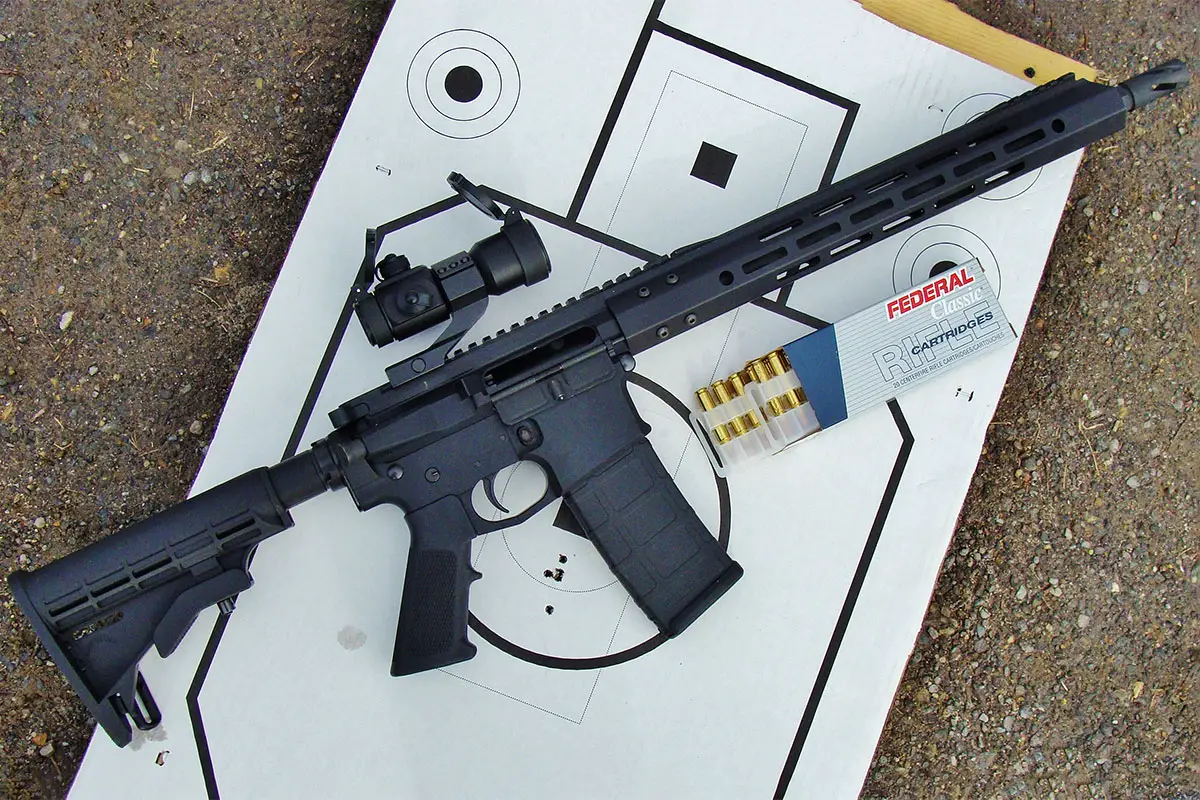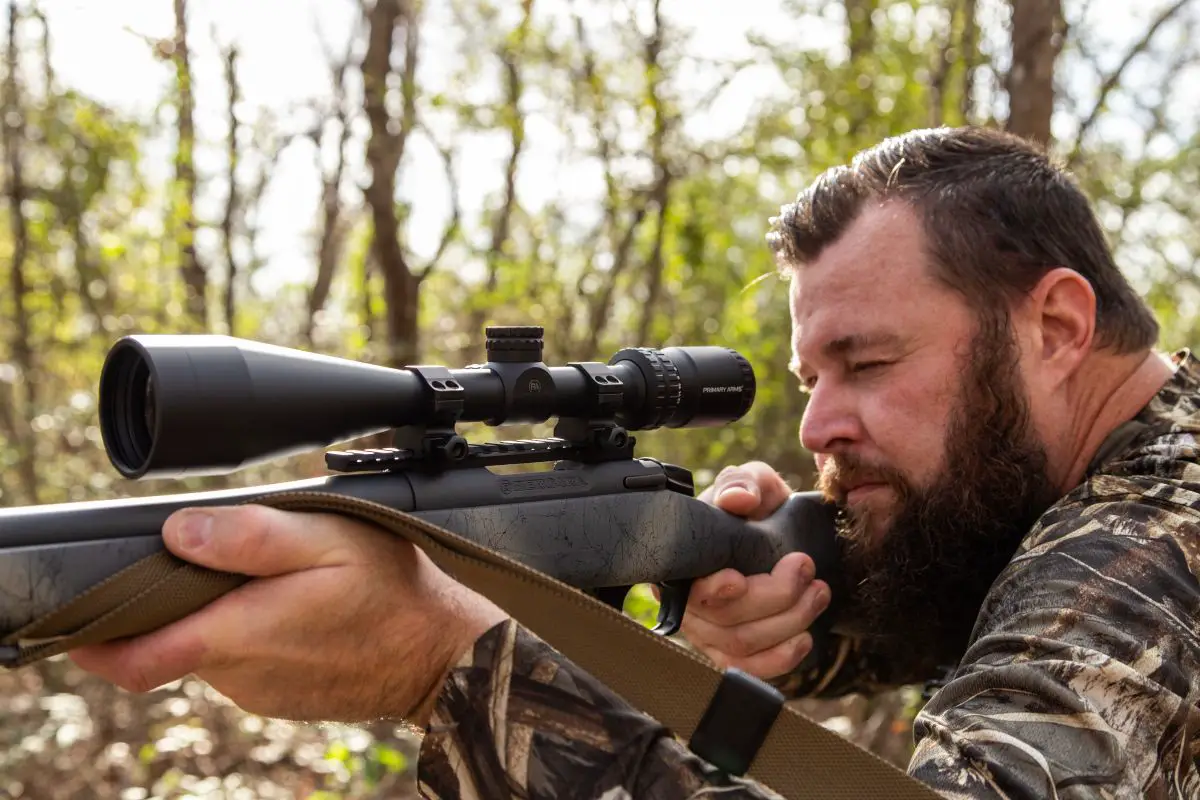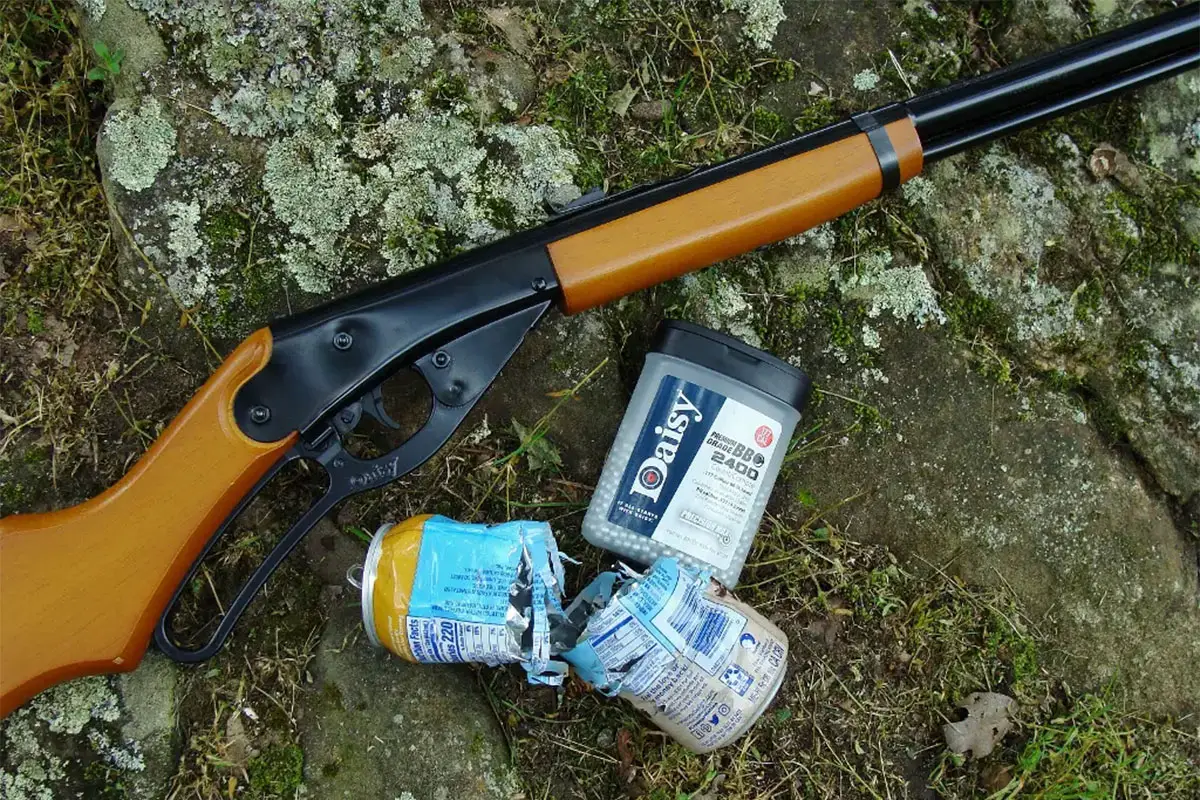10.1K
Priced for Less Than $500 – But Will it Run?
I’m probably not the only one weary of AR-15 reviews. But at the risk of beating an already tiresome subject to death, I tackled this one as an opportunity to gain experience with an unfamiliar make, offered for a price almost too good to be true. Worth it? Read this Bear Creek Arsenal review to find out…
Seems as though AR-15s fall into three categories:
- higher-end types that can push two grand,
- mid-priced but still-serviceable versions priced somewhere around a $1000,
- and bargain-priced examples for much less – possibly of questionable quality.
Because many of us who are gun people have champagne tastes and beer budgets, we often “settle” on ARs from the mid-category, manufactured by Rock River, Ruger, Springfield Armory, S&W, etc.
And the good news is, they work – typically, quite well. But what about the lowest category?
For me, a new AR priced closer to $500 was uncharted territory. Thus, I opened the sturdy cardboard box bearing a Bear Creek logo with considerable skepticism.
First Impressions
Having been handed this rifle sight unseen, I envisioned a bare-bones AR. Instead, a business-like 16-inch carbine emerged from the box with a trim, free-floated forend, contoured to complement a unique receiver. Both halves were beefier and flatter than the norm, and well-fitted.
The barrel was heavier than expected, too, contributing to the next surprise: its heftiness. If first impressions are lasting, we were off to a good start. This piqued my curiosity about Bear Creek Arsenal. Given this carbine’s relatively low price, I pictured a small group of “builders”. Which led to another surprise.
A visit to the Bear Creek website took me to a video that showed a large facility, in Sanford NC, with isles full of modern CNC machines.
The Rifle, Unboxed
Beyond a 16-inch carbine and an owner’s manual, the box contained a separately packaged “BCA Red Dot Sight” – but no magazine (a likely cost savings measure). Coincidentally, I had some experience with the sight (more to follow), but since the Bear Creek AR-15 was new ground, I did some snooping. BCA’s site lists an almost overwhelming list of parts, receiver assemblies, and ready-to-go rifles.

The exact model I reviewed is not listed on the BCA website at the moment. The closest match (shown with a standard upper receiver) I can find as of this writing has the following specs:
- BC-15 5.56 NATO Rifle 16”
- Parkerized, M4 Barrel, 1:7 Twist
- Mid-length Gas System
- 15” MLOK
- MSRP: $441.99
So, I’ll cover this carbine via its lower and upper receiver assemblies.
Lower Receiver Assembly
Apparently, the lower receiver is a BCA “machined billet Mil Spec” version, made from 7075 T6 aluminum. The trigger guard is integral with the receiver. Finished in hard coat anodized, black, it’s equipped with an M4 collapsible stock and an A2 grip. As noted previously, this lower is thicker than standard.
Thus, the horizontal pin that captures the bolt-catch has been eliminated. Instead, it’s retained by a set screw (seems sturdy enough, but a dab of thread-locker could be good insurance). The buffer tube is Mil Spec. The fire-control parts appear to be MIM.
Possibly, it’s a “Model BCA15 Multi Caliber Lower Assembly, Billet Black Engraved, Black Anodized”, SKU LAAR15-BL, listed at $169.95.

Upper Receiver Assembly
BCA lists a similar upper, but like the lower, this one is a slab-sided, billet type. Stamped “BCA15 Multi Caliber” and machined as a flat-top with a forward assist, it’s a good cosmetic match for the lower.
The barrel is 16-inches, and the section forward of the gas block is heavier than standard, measuring .745” at the muzzle. Stamped 5.56 NATO with a 1:7 twist, it has M-4 feed ramps and a mid-length .750 gas system. The gas block is a low-profile type, secured via two cap screws at 6:00. The 1/2×28 muzzle is equipped with a BCA 2 ½-inch “spiraled flash hider.” The barrel is supposedly made from Chrome Moly Vanadium steel. The bore appears to be un-plated, and its exterior has a parkerized finish.
The handguard is a BCA 15-inch Free-float MLOK “new design.” Its interrupted top rail surface and trim 1.5” O.D shave some weight while complementing the receiver. It extends just shy of the muzzle but permits access of its threads. At its rear, free float is achieved by eight screws that engage a steel collar (seems sturdy but the screws could be marked to indicate loosening).

The bolt carrier group appears to be Mil Spec, and its gas key is securely staked – no chrome plating within though.
BCA lists a similar upper, SKU 501N-UA556CM41617P-15M3, for $259.99.
The upper assembly meshed with the lower without excessive play, and the pushpins permitted easy disassembly for field-cleaning.
Total cost, calculated off both halves, works out to around $430!
Bear Creek Arsenal Review – Testing
So, the price is attractive, but how does the Bear Creek Arsenal AR-15 actually perform?
Pre-fire: Inspection & Specs
The BCA carbine had apparently been fired (factory test?), so I gave it a cursory cleaning, focusing on the bore. Not that a rifle in this league is likely to undergo an extended break-in process, but I wanted to start with a trusted load – one that’s produced outstanding accuracy in a number of AR-15s to include those with 1:7 twists. To explore the carbine’s full potential, I delayed installation of the BCA Dot Sight in favor of a scope. The expedient choice happened to be an older Burris 1 ¾ -5X Fullfield in a set of Warne QD rings (that consistently repeat zero).
Checking for potential problems I encountered a sticky bolt-catch, evidenced by the failure of the bolt-carrier to lock open on an empty magazine (three types). Easy fix by exercising the catch, followed by a few drops of oil. However, retracting the bolt assembly required lots of muscle – enough that I locked it rearward overnight before hitting the range.
Out of the box, on my scale, the bare carbine weighed 6lbs, 12 ounces. The Red Dot Sight weighed 9.9 oz.
The trigger was listed with a “MIL SPEC weight of 7-8 lbs.” At the end of the testing sessions, this one averaged 6 ½ lbs.
Live fire: Function & Accuracy
Setting up on sandbags at 100 yards, bore-sighting confirmed the scope would put me on-paper. Conditions were favorable; 35 F and overcast with barely any wind. Over the years, during T&E sessions, I’ve seen several ARs (and other types) cork off multiple rounds so, as precaution, I led off with just two. This also provided an opportunity to recover and inspect fired cases for signs of problems…


Hornady .223, 55-grain TAP (similar to V-MAX with a polymer tip)
This load (alluded to above) is my preferred light-varmint choice, and it shoots like gangbusters in lots of twists. The first two bullets struck one inch apart, around 6” right of the aiming circle. The rifle functioned normally, and the fired brass looked fine so, after correcting the scope for windage, I loaded five more. Things were progressing swimmingly – until the third shot when the rifle doubled.
At that point, since only one round remained, I fired it (with trepidation but no issues) to lock-back. After retrieving and inspecting the fired cases, a lone primer indicated the possible cause. Just an educated guess, but the fourth round might’ve slam-fired due to a highly energetic bolt-carrier assembly and soft primer (see photos). Inherent to its design, an AR’s firing pin free floats. For this reason, it’s not uncommon to note a dimple on the primer of a previously chambered (unfired) cartridge.
Downrange, one TAP round was AWOL from the target. The good news was, it was captured by the berm above – and the other four were clustered in a tidy 1-inch group. Time for taps on TAP, and some head-scratching.

Winchester 5.56 62-grain Green Tip (common military load)
An inspection of the rifle revealed no issues, so I individually loaded and chambered a few WW military-type Green Tips. The primers displayed normal dimples, so the show went on (with fingers crossed). Result: 100% function and “okay” but not-stellar accuracy. Three 5-shot groups averaged a bit above 2-inches.
Federal .223 55-grain American Eagle FMJ
I literally bought this stuff by the ton for use as our agency’s Q-load. Typically, it averages 1-5 to 2-MOA from AR-15 carbines of various makes and twists. Although it cycled perfectly through the BCA accuracy was mediocre, with three 5- shot groups averaging around 3-inches (or 3 MOA). Not a condemnation of this carbine though, as we shall see.
Federal .223 55-grain Nosler Ballistic Tip (another plastic-tipped expanding load)
I dipped into this precious hoard in the interest of science. It’s my go-to general purpose choice for all .223 and 5.56 uses involving larger varmints, etc. It also effectively anchors our large coyote/wolf hybrids (and serves a duty load for a several large home-state LE agencies to include mine).
Like TAP, Federal’s Nosler BT bullet is seldom fussy regarding twists. Accuracy typically runs “good” to “great”. Zeroing in on the same aiming circle, the BCA came to life, piling five into a ¾” cluster that was superimposed on the (marked) TAP group. It would take more shooting to confirm these great results, but my money’s on a happy outcome.
100 Yard Wrap-up
Accuracy wise, this BCA was among the fussiest rifles I’ve encountered over the years – the reason it’s worth trying different loads (although POI was consistent). Normally, I’d be fussier, too, with at least a bore-cleaning between each load. To my mind, this AR is more utilitarian. For what it’s worth, near as I can deduce, BCA recommends 75-grain boattails, or Nosler’s Match Grade 69 grain loads for this barrel.

Regarding function, other than the early excitement with TAP, the BCA ran without a hitch. At the conclusion of the 100-yard phase, a uniform pile of fired brass had accumulated roughly six feet from the rifle at 4:00. Most would’ve landed in a drywall bucket – a sign of proper function. No dents or other anomalies evident, either.
50 Yards: Connecting the Dot
Rumors to the contrary, good groups are attainable with a lower-magnification scope – with careful shooting. Dot sights can do the job to a certain extent but results typically have more in common with receiver sights. So for the dot phase, I followed our agency’s patrol-rifle zero SOP.

After mounting the BCA Red Dot Sight, I bore-sighted the upper in preparation for a 50-yard zero (which puts most AR-15s on the money at 200 yards). The sight’s CR 2032 battery (included) powers a 4-moa reticle, which offers a red or green dot with five settings.
The dot appeared fairly crisp, but lens clarity was mediocre. The unit is secured by a single nut, tightened much as I dared, using a 12mm socket and hand-driver. The windage and elevation adjustments responded as advertised through their ¼ -moa clicks, so zero was easy, using Green Tips. Or so it seemed…
A week later, during a repeat session to snag some photos, I experienced a dramatic zero shift. Turned out the mounting nut had loosened, and the ring screws were less than tight. Once home, I torqued the nut to 25 inch-pounds with blue thread-locker, and cinched the ring screws to 18 inch-lbs. A repeat session (and a few clicks) produced better results – for the time being. On a whim, I fired some 55-grain Federal Classic FMJs, which produced a decent 50-yard group off my elbows.
As a side note, a near dead-ringer of this sight is mounted to my S&W M&P 15-22. Branded as a “Walther”, it’s been hanging in there for at least a decade, possibly because its host is a .22 rimfire. BCA lists this one for $59.95. The included lens caps are, perhaps, the best part of the sight.

Armorers’ Thoughts
I asked two trained AR armorers to examine this BCA, neither of whom flagged any major faults. The first one looked it over prior to any shooting and had the same take as me: “wow, heavy buffer spring!” The second armorer was my trusted agency AR guru, and now runs his own gun shop. The shooting was over, and, to him, the buffer felt “normal” (same for me, now). He says he’s sold nearly forty BCAs with no complaints. As for the dot sight: “good luck.”
The Big Question – Worth It?
The BCA could be – especially if money is tight. It’s $450 (approximate) price allows leeway for other essentials to include magazines and ammunition, etc.
As noted above, most diehard shooters will stick with higher-priced AR-15s. Same for LE agencies, include my own. Our dozens of Windham Weaponry carbines have withstood thousands of rounds and years of hard knocks – along with their Aimpoint Pro dot-sights. With lives on the line, I see no reason to switch.
But many gun owners shoot infrequently – at best. Sold for half the price of a WW carbine (not counting the expense of its sight) and similarly configured, the BCA version might suffice. It might also make the cut for truck gun use, or maybe use as a spare, possibly stashed at some other location for bug-out purposes or camp duty.
Regardless of the BCA’s rationale, I’d recommend a few upgrades beginning with the dot sight. If an Aimpoint is out, the logical starting point is a set of backup iron sights, hopefully, with an eye toward an optical alternative like the Vortex SPARC Solar Dot Sight.
For sure, I’d switch the wiggly stock and G.I. pistol-grip for a set sold by MAGPUL, etc. Add a sling (easy via a QD swivel) and you’re pretty much there – except for ammo and magazines. Once the bolt-catch glitch was resolved, this one ran without a hitch off 30-round PMAGs, 20-Rd Brownells, and plastic 5-shot MWGs (useful off a bench rest).
Last point: I only put 200 rounds through the BCA carbine – far from a comprehensive test. The “double TAP” appears to have been an anomaly. Playing it safe, round up a few more reviews before a final commitment.
Source link: https://survivedoomsday.com/bear-creek-arsenal-review-ar-15/ by Steve Markwith at survivedoomsday.com






